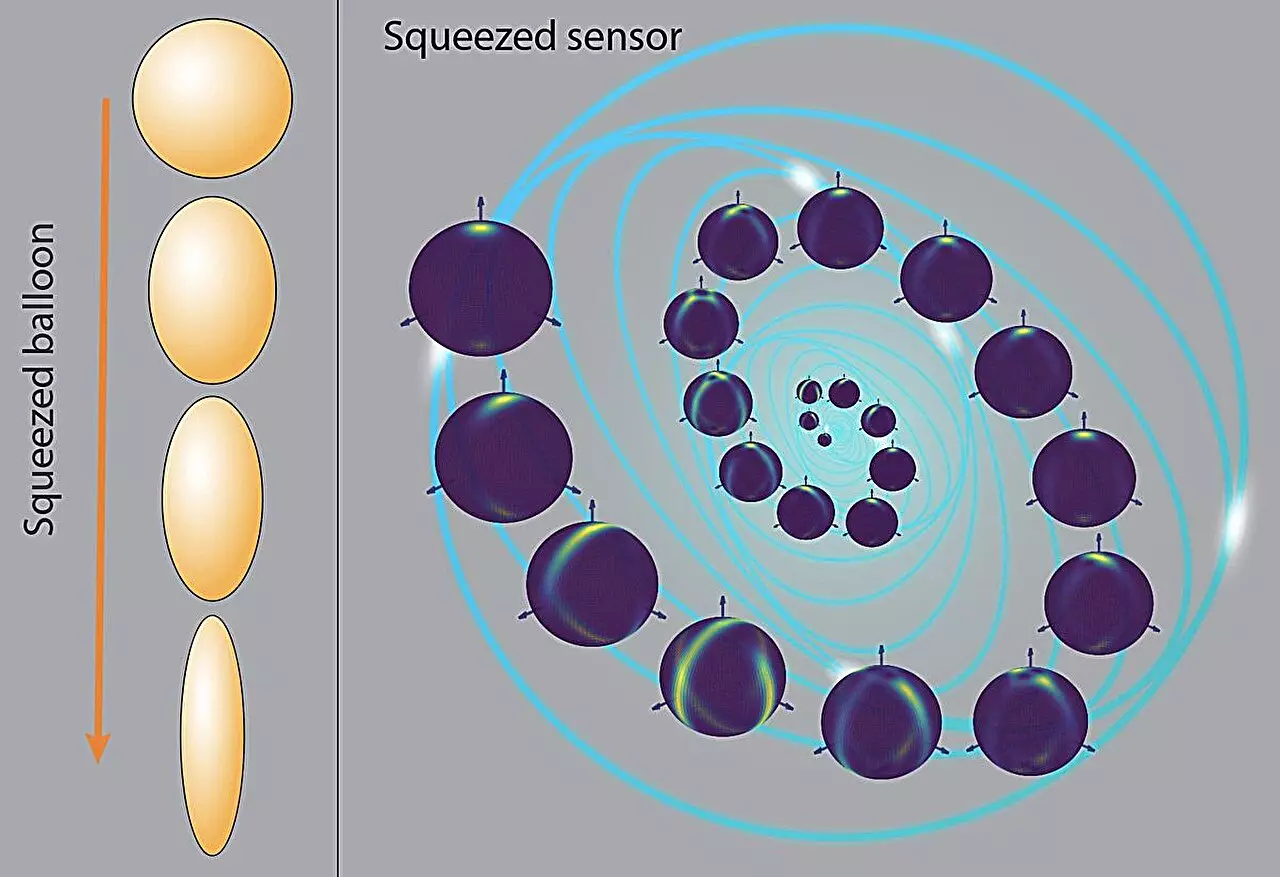Quantum mechanics, a cornerstone of modern physics, can sometimes feel like navigating a maze of paradoxes and counterintuitive principles. Among these fascinating theories lies the concept of quantum squeezing, which involves an intricate interplay of uncertainties within quantum systems. At its core, quantum squeezing facilitates enhanced precision in measuring certain characteristics of a quantum system, despite appearing to complicate our understanding of uncertainty.
To grasp the implications of quantum squeezing, think of it as the physics equivalent of manipulating a balloon. When air is evenly distributed within a balloon, it adopts a spherical shape, symbolizing balanced uncertainty across various measurable properties, much like a quantum system in equilibrium. However, when one side of the balloon is squeezed, the shape distorts; one dimension contracts while another expands. This illustrates the phenomenon of quantum squeezing: by decreasing the uncertainty (or ‘noise’) associated with one property, such as position, you inevitably increase the uncertainty in a related property, such as momentum.
Despite the oddity of this process, the cumulative uncertainty, akin to a fixed volume of air in the balloon, remains constant. This subtle manipulation allows researchers to gain heightened precision in measuring specific attributes of quantum states. For instance, atomic clocks, which are pivotal in various precision timekeeping applications, have seen noticeable improvements through the application of quantum squeezing.
From Theory to Application: Advancing Measurement Techniques
Recent research spearheaded by Dr. Le Bin Ho from Tohoku University delves deep into the potential of quantum squeezing to refine measurements that consider multiple factors simultaneously. Presenting findings in the journal *Physical Review Research*, Dr. Ho’s work illuminates an ongoing challenge in quantum measurement: how to efficiently extract precise information from complex systems where multiple variables interact.
This groundbreaking study targets the interaction of a three-dimensional magnetic field with identical two-level quantum systems. Under optimal conditions, measurements can achieve their theoretical limits of precision; however, as with many advancements in physics, bridging the gap between ideal scenarios and real-world applications poses a significant hurdle. Historically, many researchers have been unable to reconcile the full effects of quantum entanglement in dynamic measurement systems.
Implications Across Fields of Technology
The implications of enhanced measurement precision are potentially transformative across several domains. Quantum imaging, for instance, could break new ground in generating more detailed and sharper images than ever before. In the realm of radar technology, improved detection capabilities could lead to unmatched accuracy in identifying objects, which is crucial for navigation and safety applications.
Moreover, advancements in atomic clocks stand to benefit navigation systems, including the Global Positioning System (GPS), wherein time is imperative. Fine-tuning the precision of these clocks can lead to enhanced functionality in applications relying on synchrony. On another front, medical technologies like Magnetic Resonance Imaging (MRI) could also gain from these developments, culminating in better resolution for imaging cellular structures and more sensitive biosensors capable of early disease detection.
As we advance into an era defined by quantum applications, the research conducted by Dr. Ho and his team not only furthers academic understanding of measurement mechanisms but also sets the stage for next-generation technologies. By probing deeper into how quantum squeezing can adapt to various types of noise and exploring avenues to mitigate these disruptions, the potential for innovation appears boundless.
The journey toward maximizing precision in multiphase quantum measurements is only beginning. With ongoing research and commitment to unraveling the complexities of quantum squeezing, the scientific community stands poised on the brink of breakthroughs that promise to redefine technological landscapes and enhance our understanding of the quantum world. As we harness these insights, we inch closer to realizing the true promise of quantum physics: a future where our measurement capabilities are not just theoretical ambitions, but tangible realities.


Leave a Reply